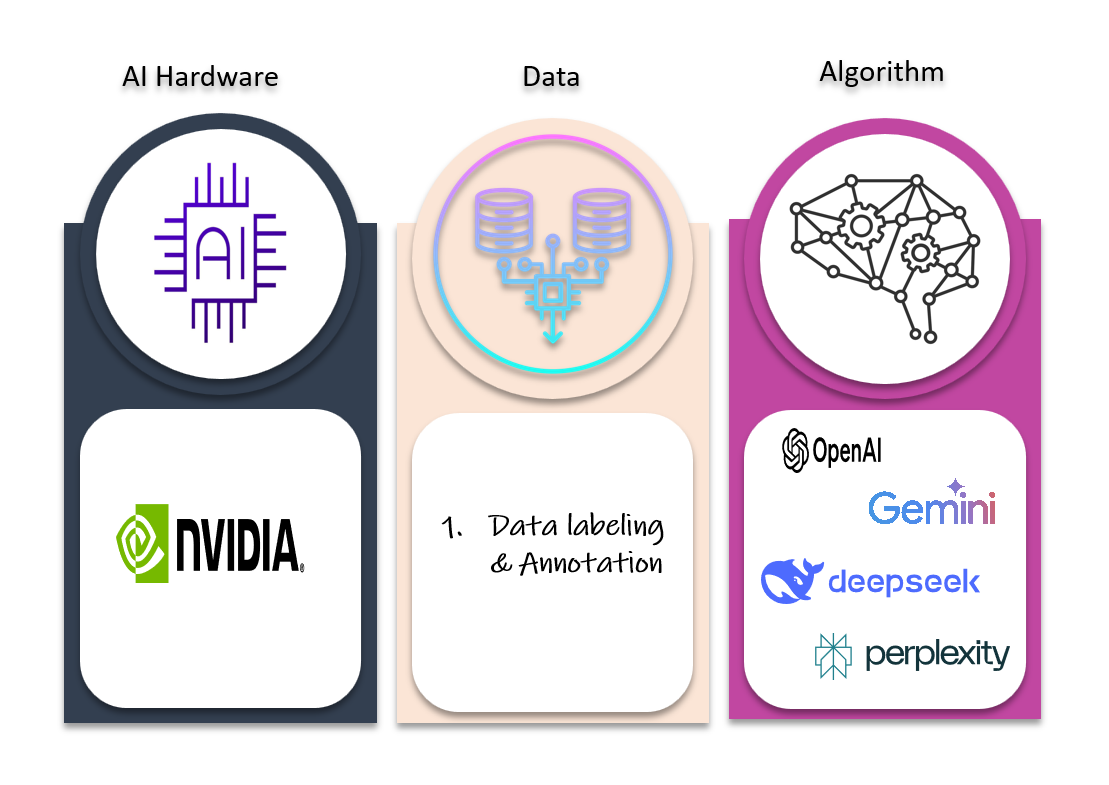Why Do We Need High Quality Labeled Data?
Artificial Intelligence (AI) is founded on three fundamental pillars: algorithms, computational power, and data. While recent breakthroughs have primarily focused on the first two pillars, the data aspect continues to present significant challenges.

Despite the massive amount of data available today, machine learning (ML) models are not designed to work directly with raw data. Instead, "labeled data" are required for them to work effectively. Moreover, the quality of labeled data plays an essential role—high-quality, accurately annotated data is essential for building reliable and high-performing ML models.
"No labels, no learning. Labels are the foundation of every supervised machine learning system—without them, models cannot connect input features to meaningful outputs."
Why Data Labeling Matters
Data labeling transforms raw, unstructured data into meaningful training sets that machines can understand. Whether you're building a sentiment analysis model for Arabic social media or creating a named entity recognition system for MENA business documents, the quality of your labels directly impacts your model's performance.
The challenge becomes even more complex when working with Arabic text, where dialectical variations, diacritical marks, and mixed-language content require specialized expertise. This is where choosing the right labeling technique becomes crucial for project success.
Labeling Techniques and Their Best Uses
Selecting the appropriate labeling strategy can determine whether your project scales smoothly or stalls under cost and time pressures. Here are the main approaches and when to use each:
1. Manual Labeling
How it works: Human experts or crowdsourced workers label data directly.
When to use: Precision is critical, such as in medical, legal, or other high-stakes domains.
Best for: Small to medium datasets where accuracy is paramount.
2. Programmatic Labeling
How it works: Apply rules, heuristics, or regex to automatically generate labels.
When to use: Scaling fast on large unlabeled datasets where some noise is acceptable.
Best for: Large-scale initial labeling that will be refined later.
3. Weak Supervision
How it works: Combine multiple noisy label sources with probabilistic models (e.g., Snorkel).
When to use: Large datasets where manual labeling is infeasible, but aggregate signals can provide useful training labels.
Best for: Complex projects with multiple data sources.
4. Active Learning
How it works: The model identifies uncertain examples and asks humans to label them.
When to use: Labeling budget is tight and efficiency is the key priority.
Best for: Optimizing labeling resources for maximum impact.
5. Pre-trained Models (Pseudo-labeling)
How it works: Use models trained on related tasks to generate initial labels.
When to use: Bootstrapping a new dataset quickly before investing in more precise labeling.
Best for: Quick prototyping and initial dataset creation.
Conclusion
Whether you're labeling 100 samples for a prototype or a million records for a production system, the quality of your strategy matters just as much as the quantity of your data. A well-matched labeling strategy ensures:
- Efficiency → You spend labeling resources where they have the biggest impact
- Cost savings → Reduces wasted effort on unnecessary or redundant labels
- Higher accuracy → Models trained on well-labeled data perform better and generalize more reliably
- Long-term stability → Prevents costly fixes later, such as retraining on corrected labels or debugging biased outputs
In short: investing early in the right labeling strategy pays dividends later, saving you time, money, and downstream pain. For domain-specific AI projects, this investment becomes even more critical due to the unique contextual requirements of each field.
Ready to Get High-Quality Domain Expert Labeled Data?
Nawwa AI provides expert data annotation services with specialists across multiple domains. Our domain experts ensure contextually accurate annotations that capture intent, constraints, and rationale.